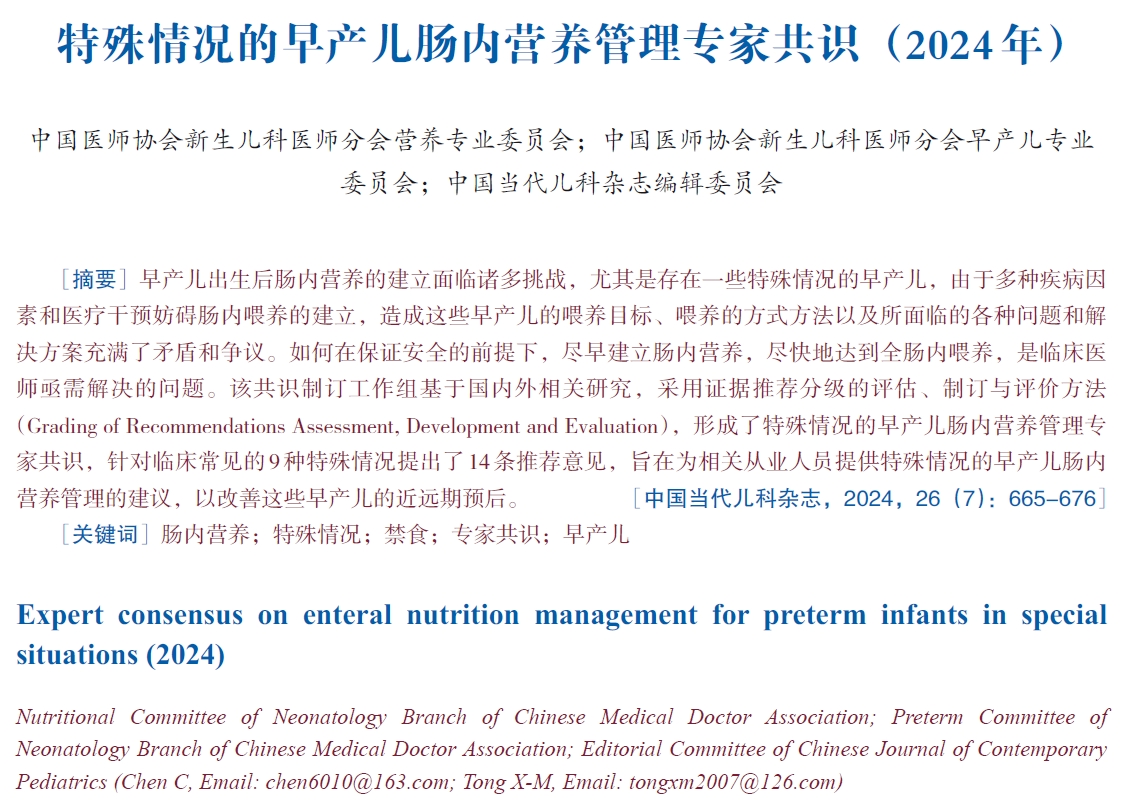 PDF(773 KB)
PDF(773 KB)


Expert consensus on enteral nutrition management for preterm infants in special situations (2024)
Nutritional Committee of Neonatology Branch of Chinese Medical Doctor Association; Preterm Committee of Neonatology Branch of Chinese Medical Doctor Association; Editorial Committee of Chinese Journal of Contemporary Pediatrics
Chinese Journal of Contemporary Pediatrics ›› 2024, Vol. 26 ›› Issue (7) : 665-676.
 PDF(773 KB)
PDF(773 KB)
 PDF(773 KB)
PDF(773 KB)
Expert consensus on enteral nutrition management for preterm infants in special situations (2024)

Enteral nutrition / Special situation / Fasting / Expert consensus / Preterm infant